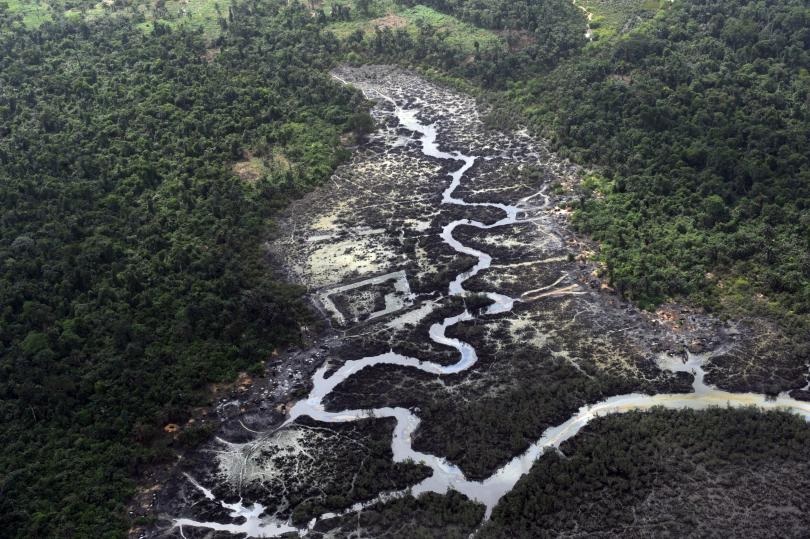Commentary
Commerce transforms resources into waste — and CO2
After transformation and use, all matter can be discovered as "used goods" in the form of slag, solid liquid and gaseous waste that end up in the soil, water and air, worsening ecological quality.

Four hundred and ten. In recent days, the fact that the concentration of carbon dioxide CO2 in the atmosphere reached a value of 410 parts per million by volume (ppmv), has been given great importance.
This concentration, as measured for many years in a station on the Mauna Loa island, Hawaii, in the middle of the Pacific, has been increasing between 2 and 3 ppmv per year.
This means that each year, about 15 to 20 billion tons of CO2 are generated, the gas mostly responsible for global warming, in addition to 3 trillion tons of CO2 already present in the 5.5 quintillion tons of atmosphere.
The carbon dioxide released into the atmosphere (about 30-35 billion tons per year) comes mainly from the combustion of fossil fuels, which is currently around 14 billion tons of oil, coal and natural gas per year.
Other sources of CO2 are cement production (over 4 billion tons per year), burning of waste, forest fires and some agricultural activities. About half of all the CO2 emitted into the atmosphere is absorbed by the vegetation on the continents and the sea, in the continuous contact between the atmosphere and the surface of the oceans.
For centuries, the concentration of CO2 in the atmosphere has remained relatively constant at about 280 ppmv. The progressive and growing trend in this concentration, up to the current 410 ppm and beyond, has started at the beginning of the 20th century, when the oil and natural gas joined coal as energy sources for the production of increasing quantities of goods demanded by a growing world population. The natural process of “purification” of the atmosphere cannot keep up and a growing proportion of CO2 remains in the atmosphere, holding part of the solar heat.
Therefore, goods production and their use, as well as the processes of elimination of waste, are the real cause of the global warming that is scaring the rulers of the world and gripping the inhabitants of Earth with climatic vagaries, periods of drought or sudden rains, the slowly progressive, but evident, melting of permanent ice and the slow increase in the sea levels.
It is interesting that many consider “commodities” a dirty word. Yet, all the things used to meet human needs and wants to move around, eat, communicate, live, all the items traded, clothes and canned meat, cars and shoes, diesel and mobile phones, newspapers and electricity, etc., are goods manufactured and produced using and transforming the vegetable, animal and mining resources of the planet.
Financial transactions themselves, the gross domestic product, the movement of every coin — it does not matter if it is in euros, dollars or yuan — are accompanied by movements of goods, materials and energy.
The approximately €60 trillion of the annual world GDP are associated with the movement of about 50 billion tons of goods every year, including agricultural products, minerals, ships, metals, plastics, furniture, cement, bread, etc., and even 4 quadrillion tons of water, since water is a product, too.
And after transformation and use, all this matter can be discovered as “used goods” in the form of slag, solid liquid and gaseous waste that end up in the soil, water and air, worsening ecological quality. Among this waste are the CO2 mentioned above and another tens of billions of tons of materials.
In other words, there is a direct relationship between the changes of the environment and the production, use and existence of goods.
In 1970, Barry Commoner wrote that annual global environmental changes depend on the number of inhabitants of the Earth, multiplied by the average pounds of goods used by each person in a year, multiplied by the “quality” of each commodity, estimated as the addition of the amount of energy, minerals and other products, the water required and waste generated per pound of used goods.
In hindsight, this “merchandise index” is the true “value” of a commodity or service.
Environmentalists have invented indicators of environmental effects that they refer to as ecological “footprint,” which is evaluated through the analysis of the “life cycle,” and so on: They are talking about goods.
I had the fortune of being mocked for decades because I taught the study of commodities at the university. Many of my colleagues laugh at the existence of a field of study that dealt with wheat and coal, aluminum and oil. In short, they were forgetting, or perhaps they never knew, that Karl Marx, in the first chapter of the first volume of Capital (entitled The Goods) said he intended to carry out the critique of capitalist politics starting from the concept of exchange value. He pointed out that goods also have a value of use which is the focus of study of a special discipline, the study of commodities (einer eigenen Disziplin, der Warenkunde).
And this last form of value determines the severity of environmental damage, the environmental “cost” of human activities. If we want to slow down the negative effects of pollution and climate change, we can focus on decreasing the mass of the goods used and wasted in rich countries — because the poor countries need more goods, if only to escape poverty and disease — but especially on how to modify existing goods, second technology. Engineers, chemists and biologists have their work cut out for them over the next century.
Originally published at https://ilmanifesto.it/nel-ciclo-delle-merci-e-dei-rifiuti-esplosione-della-c02/ on 2017-05-10
